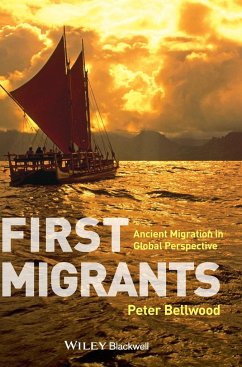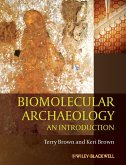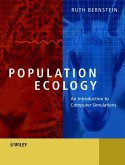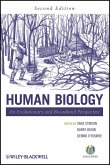Peter Bellwood's global perspective on human migration offers an unprecedented view of the evolution of human lifeways. Charting the fascinating story of human migration throughout prehistory, the author takes the reader on an archaeological odyssey from humanity's origins in Africa two million years ago, through the challenges and dislocations of the Ice Ages, to the continental migrations of agricultural peoples within the last 10,000 years.
The first publication to outline the complex global story of human migration and dispersal throughout the whole of human prehistory. Utilizing archaeological, linguistic and biological evidence, Peter Bellwood traces the journeys of the earliest hunter-gatherer and agriculturalist migrants as critical elements in the evolution of human lifeways. * The first volume to chart global human migration and population dispersal throughout the whole of human prehistory, in all regions of the world * An archaeological odyssey that details the initial spread of early humans out of Africa approximately two million years ago, through the Ice Ages, and down to the continental and island migrations of agricultural populations within the past 10,000 years * Employs archaeological, linguistic and biological evidence to demonstrate how migration has always been a vital and complex element in explaining the evolution of the human species * Outlines how significant migrations have affected population diversity in every region of the world * Clarifies the importance of the development of agriculture as a migratory imperative in later prehistory * Fully referenced with detailed maps throughout
The first publication to outline the complex global story of human migration and dispersal throughout the whole of human prehistory. Utilizing archaeological, linguistic and biological evidence, Peter Bellwood traces the journeys of the earliest hunter-gatherer and agriculturalist migrants as critical elements in the evolution of human lifeways. * The first volume to chart global human migration and population dispersal throughout the whole of human prehistory, in all regions of the world * An archaeological odyssey that details the initial spread of early humans out of Africa approximately two million years ago, through the Ice Ages, and down to the continental and island migrations of agricultural populations within the past 10,000 years * Employs archaeological, linguistic and biological evidence to demonstrate how migration has always been a vital and complex element in explaining the evolution of the human species * Outlines how significant migrations have affected population diversity in every region of the world * Clarifies the importance of the development of agriculture as a migratory imperative in later prehistory * Fully referenced with detailed maps throughout
"Bellwood rebalances our understanding of cultural evolution to show colonization and immigration as prime movers in spreading languages, religions and people, and in generating the diversity of ancient societies' material cultures." -- Norman Hammond, Boston University
"Peter Bellwood has given us a monumental, invaluable, thoughtful survey of human migration, around the whole world, from 2 million years ago until modern times." -- Jared Diamond, University of California, Los Angeles
"Peter Bellwood has given us a monumental, invaluable, thoughtful survey of human migration, around the whole world, from 2 million years ago until modern times." -- Jared Diamond, University of California, Los Angeles
"In sum, First Migrantsis a commendable effort to synthesize a growing body of literature on the subject and will serve as a useful and much needed text for courses on the subject. For those generally unfamiliar with different parts of the world and why people moved to and fro, Bellwood has offered an attractive resource and one which should prove useful in that regard for years to come." (American Antiquity, 1 July 2014)
"This is a significant contribution to our understanding of world archaeology." (Antiquity, 1 June 2014)
"This is a significant contribution to our understanding of world archaeology." (Antiquity, 1 June 2014)








